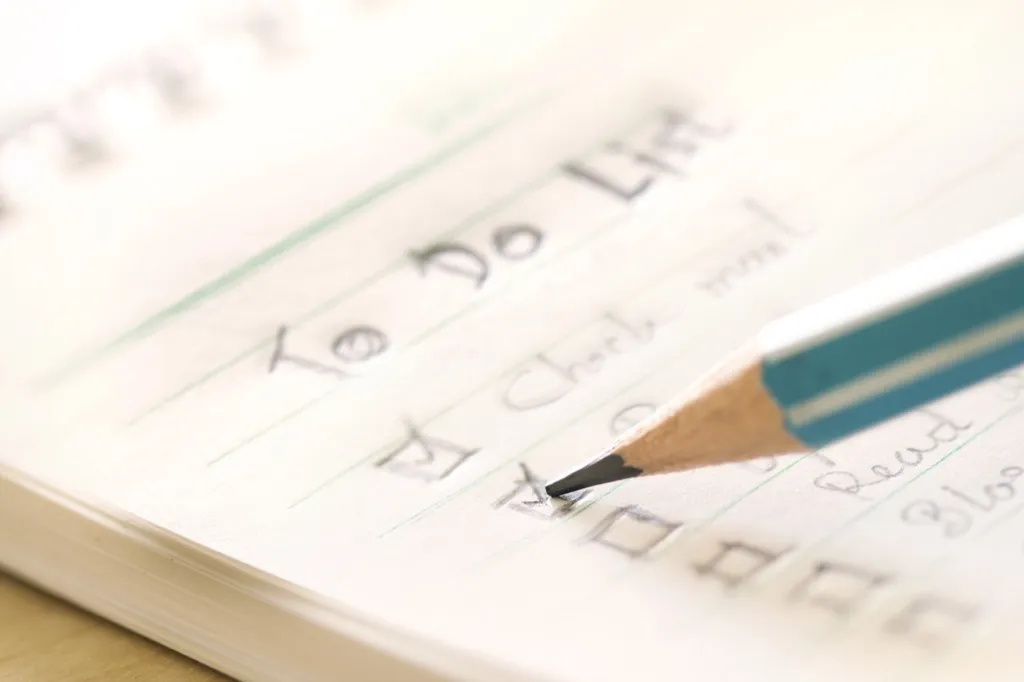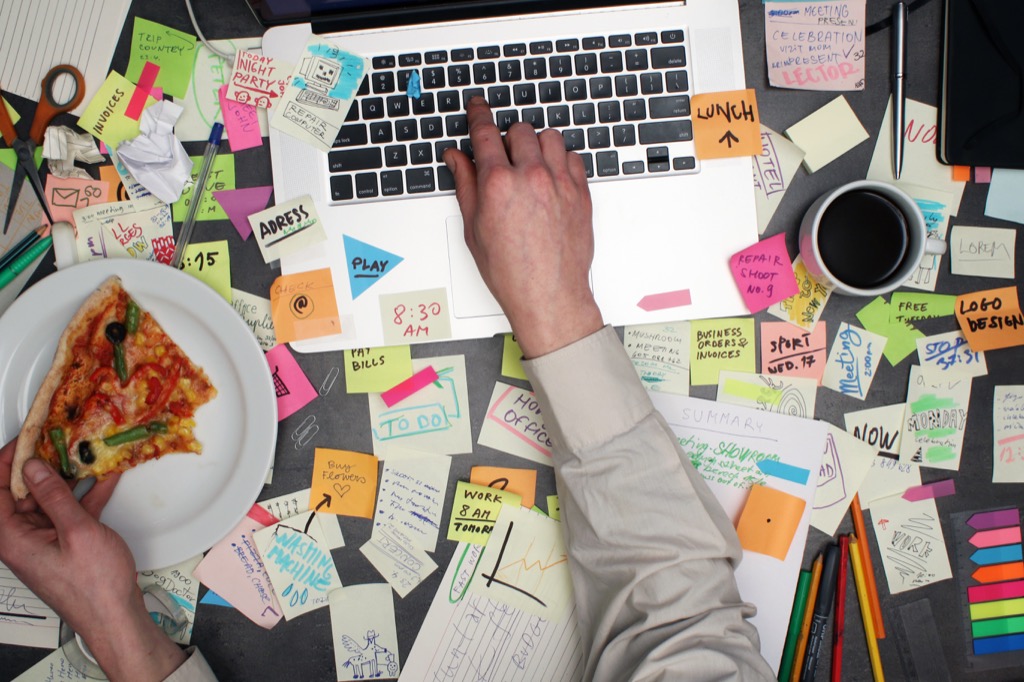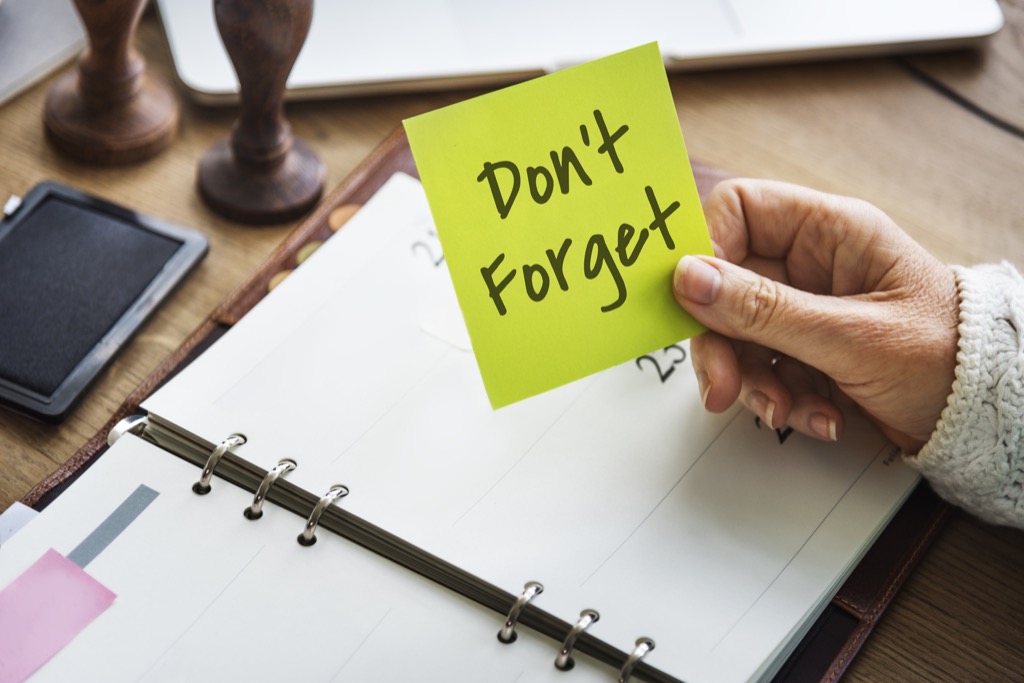17 Biggest To-Do List No-Nos

Every organized person swears by one trusty tool: the to-do list. It gives the day structure, keeps you on schedule, and reminds you of deadlines fast approaching. But even though the to-do list seems simple enough—write things down, check them off—there are many, many ways to mess things up and sabotage your own success.
For instance, if you’re using your phone to keep track of uncompleted items, then you’re already breaking one of the cardinal rules of writing an effective task list. And if you combine your to-dos with your long-term bucket list goals, then you’re definitely not doing things right. Herein, we’ve rounded up the most common to-do list mistakes so that you’ll know what to avoid, all in the name of attaining the most streamlined, efficient day ever—every day. And to clean up other key aspects of your life, don’t miss the 27 Ways to Be a Stress-Free Email User.
1
You add unrealistic tasks.

Sure, we all want to skydive or go on an African safari one day. But long-term goals like this belong on your bucket list, not on your to-do list. And weighing your bucket list down with these unattainable goals will only overwhelm you and make it harder to achieve the simpler, short-term tasks. Plus, as every Type A or Type A-minus person knows, the most unsatisfying feeling in the world is not having everything on your to-do list checked off—and unfortunately, you likely won’t be checking off “leap from 30,000 feet” any time soon.
2
You spread yourself too thin.

What you want to do and what you can do are two very different things, so don’t flood your to-do list with dozens of tasks to get done in one day. With more tasks than time, you will only find that your to-do list is causing you anxiety with no beneficial end results. Instead, set aside an estimated amount of time for each task (for instance: unload the dishwasher—15 minutes) so you can better gauge what’s realistically possible. And for more ways to stay on top of things, don’t miss the 20 Ways to Procrastinate Productively.
3
You don’t prioritize.

Not everything on your to-do list is of equal priority, but you’ll never know what comes first if you don’t order things according to their importance. With everything in a giant cluster, you might miss your meeting with top brass because it was sandwiched in between “do the laundry” and “pick up dry cleaning.” On your next to-do list, use a numbering system, with things labeled (1) being of the utmost importance, (2) being of regular importance, (3) being of mild importance, and so on.
4
You’re not using visuals.

Some people respond better to visual cues—and for these people, it can help to create a visual to-do list instead of the traditional check list.
So what exactly is a visual to-do list? It can take on many shapes and forms, but one good practice to always follow is to delegate a certain amount of space to an item depending on its importance. For instance, if an item must get done by the end of the day, you should dedicate one-third of your paper to that item alone to designate its level of importance.
5
You’re calling it a “to-do list.”

The simple act of labeling your tasks as “to do” could be enough to deter you from ever actually doing them. If the mere thought of a to-do list makes you cringe, consider renaming it a “could-do list.” That way, the tasks at hand won’t seem as daunting, and you won’t feel as guilty if you don’t check everything off of your list.
6
You’re using it to boost your self-esteem.

It’s good to get into a habit of making a to-do list every morning. But if you’re only making the list to feel better about yourself and not because you want to be more organized and productive, it may come to bite you in the butt.
“The most productive people recognize that a to-do list is a device for prioritization, but only if you push yourself to make it into a device that forces you to think about your priorities,” says The Power of Habit author Charles Duhigg. For real, useful ways to boost your mood, use these 75 Genius Tricks to Get Instantly Happy.
7
You write your list in the morning.

It might feel like you’re getting ahead by writing your to-do list in the morning, but it can actually result in your falling behind—especially if you have assignments with early deadlines. Instead, make sure you plan out your schedule for the next day before you head to bed. With your to-do list prepared and ready to go, it won’t weigh heavily on your mind while you sleep, and you’ll be able to wake up with a precise picture of what the day’s schedule looks like.
8
You type your lists.

We’re always on at least one device at some point in time, and so it’s hard to resist the urge to just type our to-do lists out on our phones or computers and call it a day. But studies have shown that typing things out makes them harder to remember, which is why it’s better to invest in a planner and spend the extra five minutes writing everything out by hand. However, there are some ways that your devices can come in handy, like with these 20 Things You Didn’t Know Your Smartphone Could Do.
9
You list tasks with several steps as a single item.

The task “bake cookies” is a great example of this. Sure, the ultimate task might be to actually bake the cookies, but there’s so much more that goes into this process. In addition to the baking, you’ll need to hit up the grocery store to pick up supplies, find a recipe, and check your pantry for which ingredients you already have. When separated, this is really four tasks, not one—but you’d never know that by looking at “bake cookies” on your to-do list.
10
You use question marks.

Don’t ever put an item on your list with a question mark at the end. If that item gets done, then great; if it doesn’t, it’ll just carry over to the next day’s list. Using a question mark will only make a task feel like it doesn’t belong on the list, rendering it even less likely to get done than it already was.
11
You put off the tasks that require effort.

Nobody wants to wait in line for hours at the DMV or sit on hold with the phone company in hopes that an actual human will pick up. But putting these tasks off for days and days will only make them more stressful—after all, they’re on your to-do list for a reason. And if you struggle with stress, try these 12 Genius Tricks for Turning Anxiety into Excitement.
12
You only keep a to-do list.

Many people have found success by also making a not-to-do list. Examples of what to put on there? Don’t schedule meetings in the morning. Don’t forget to take breaks during the workday. Don’t agree to take on more than you can handle. Many executives, like investor Tim Ferriss, swear by this method, noting that “what you don’t do determines what you can do.”
13
You tackle everything at once.

Aim to slowly check tasks off your to-do list throughout the day. Otherwise, you risk overwhelming yourself with too many things to do in too little time, which is precisely what a to-do list is trying to avoid. And if you struggle with time management skills, try these 60 Best 60-Second Productivity Hacks.
14
Your to-do list is disorganized.

The whole purpose of a to-do list is to make your life more organized, which is never going to happen if your tasks are written randomly on Post-it Notes scattered around your desk. You’ll benefit from investing in a notebook or planner where all of your tasks can be found in a single place. And if you need help clearing your office space, try these 20 Easy Tips for Keeping Your Desk Organized.
15
You don’t set reminders.

With everything on your plate, you can’t be expected to remember everything on your to-do list and when it needs to get done by. That’s why it’s vital to set reminders—like alarm notifications on your phone—to remind you when deadlines are fast approaching. (And of course, your to-do list should always be close by!)
16
You don’t write anything down.

Don’t rely on your brain to remember everything that needs to get done. When you commit your tasks to memory, you risk missing deadlines and forgetting important tasks altogether, so just take the extra time to jot them all down. But if you want to learn what your memory can do, check out these 35 Crazy Facts about Your Memory.
17
You’re not using the three Ds.

The three Ds, according to Prioritized Living blogger Megan Nye, are: Delete tasks that are unnecessary. Delegate items that someone else can handle adequately. Defer non-urgent activities for a later date. Nye says that these practices will significantly shorten your task list and unload some of the stress from your plate. And for more ways to be productive and stress-free, try the 20 Best Ways to Be More Mindful at Work.
To discover more amazing secrets about living your best life, click here to sign up for our FREE daily newsletter!